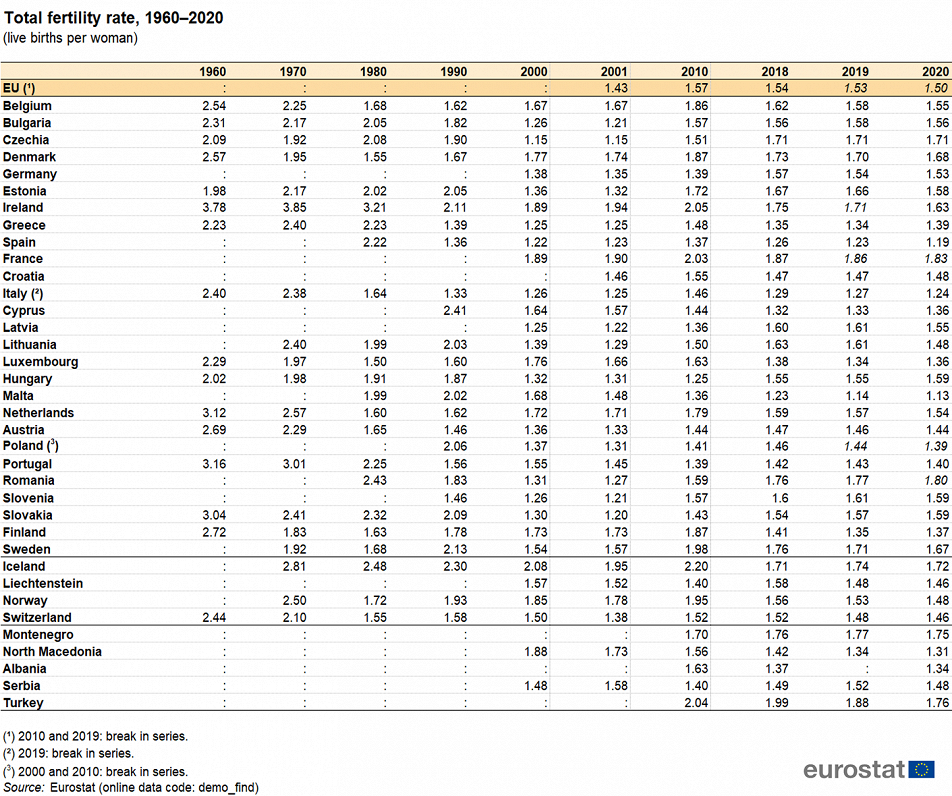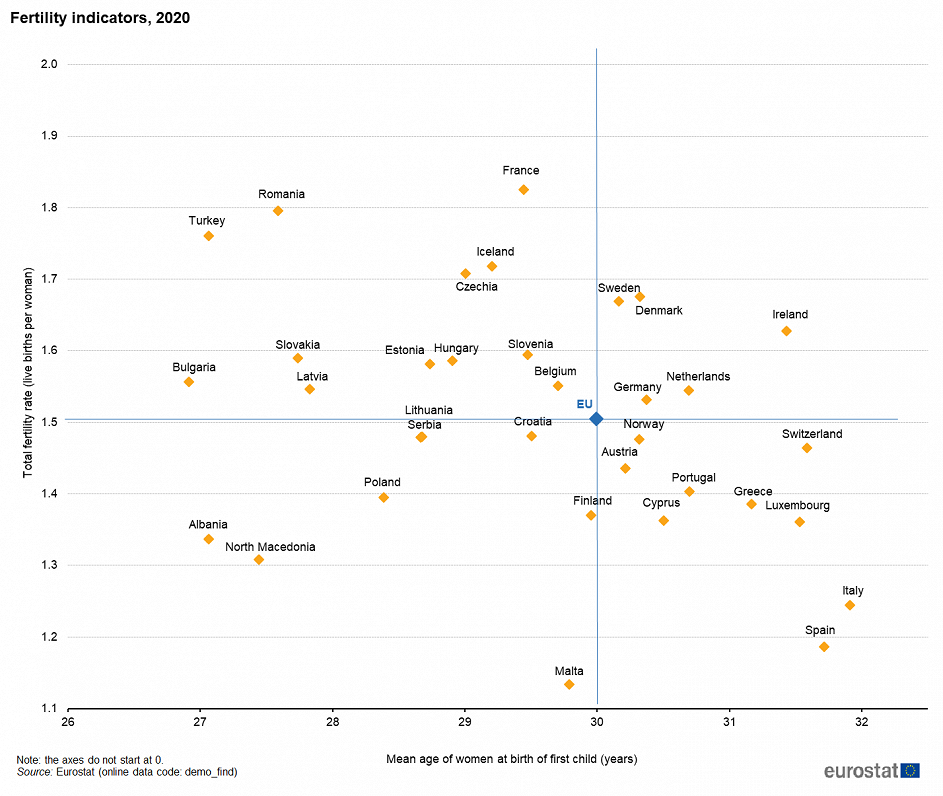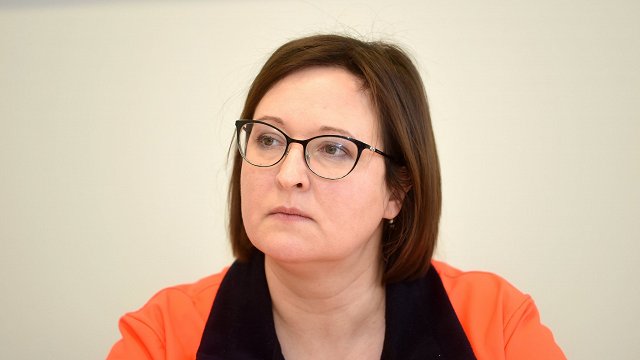The total fertility rate stood at 1.50 live births per woman in the EU in 2020, a small decrease from the recent peak in 2016 (1.57) but still an increase compared with 2001 (1.43).
Latvia's total fertility rate in 2020 was just above the EU average at 1.55 live births per woman. It was down on 2019's figure of 1.61 but still significantly up on 2001's low of 1.22.
29.5 years was the mean age of women at the birth of their first child, in the EU in 2020. The lowest mean age at birth of a first child can be found in Bulgaria (26.4 years) and Romania (27.1 years); the highest values can be observed in Italy (31.4 years) and in Spain (31.2 years). For Latvia the figure was exactly 30 years.

Among the EU Member States, France reported the highest total fertility rate in 2020, with 1.83 live births per woman, followed by Romania, with 1.80 live births per woman and Czechia with 1.71 live births per woman. By contrast, the lowest total fertility rates in 2020 were recorded in Malta (1.13 live births per woman), Spain (1.19 live births per woman) and Italy (1.24 live births per woman). Among the EFTA and candidate countries the highest total fertility rates in 2020 were reported by Iceland (1.72), Montenegro (1.75) and Turkey (1.76).
Between 2019 and 2020, the total fertility rate decreased in 18 Member States, increased in eight Member States and was stable in Czechia: the highest decrease could be observed in Lithuania (from 1.61 in 2019 to 1.48 in 2020) while the highest increase was recorded in Greece (from 1.34 in 2019 to 1.39 in 2020).
In most of the EU Member States, the total fertility rate declined considerably between 1980 and 2000–2003: by 2000, values had fallen below 1.30 in Bulgaria, Czechia, Greece, Spain, Italy, Latvia, Slovenia and Slovakia. After reaching a low point between 2000 and 2003, the total fertility rate increased in many Member States and by 2020, all of them except Malta, Spain and Italy reported total fertility rates that were above 1.30.

The graph above shows a plot of the total fertility rate against the mean age of women at the birth of their first child in 2020. Some of the countries with the highest total fertility rates also had a relatively high mean age of women at the birth of their first child. Four different groups of EU Member States can be broadly identified based on their position with respect to the EU averages (as identified by the quadrants defined by the blue lines). The first group (top right quadrant) is composed of Denmark, Germany, Ireland, the Netherlands and Sweden where both the total fertility rate and the mean age of women at the birth of their first child were above the EU average. A second group (bottom left quadrant) is made up of Croatia, Malta, Lithuania, Poland and Finland: both their total fertility rates and mean ages of women at the birth of their first child were below the EU averages, as was also the case in Albania, North Macedonia and Serbia.
A third group (bottom right quadrant) composed of Greece, Spain, Italy, Cyprus, Luxembourg, Austria and Portugal, as well as Switzerland and Norway recorded a higher than average mean age of women at the birth of their first child but a lower total fertility rate than the EU average. The final group (top left quadrant) was composed of Belgium, Bulgaria, Czechia, Estonia, France, Latvia, Hungary, Romania, Slovenia and Slovakia, as well as Iceland and Turkey; in each of these, the total fertility rate was higher than the EU average but the mean age of women at the birth of their first child was below the EU average.
Close to half (46.2 %) of the children born in the EU in 2020 were first born children, with this share exceeding half in Portugal, Romania, Luxembourg, Malta, Spain and Bulgaria (see Figure 6). By contrast, the lowest shares of first born children were recorded in Estonia (38.0 %), Latvia (38.7 %) and Ireland (39.3 %).




























